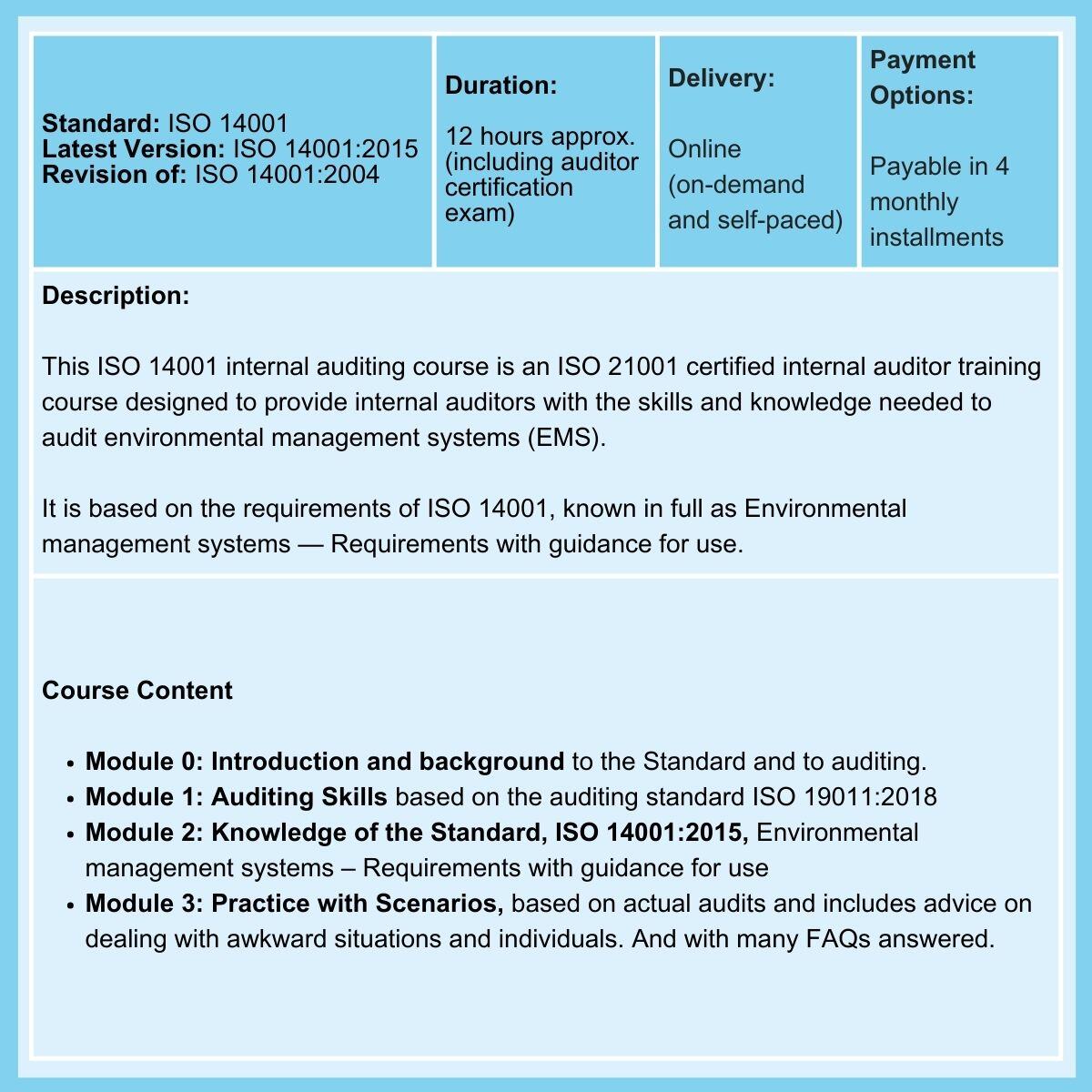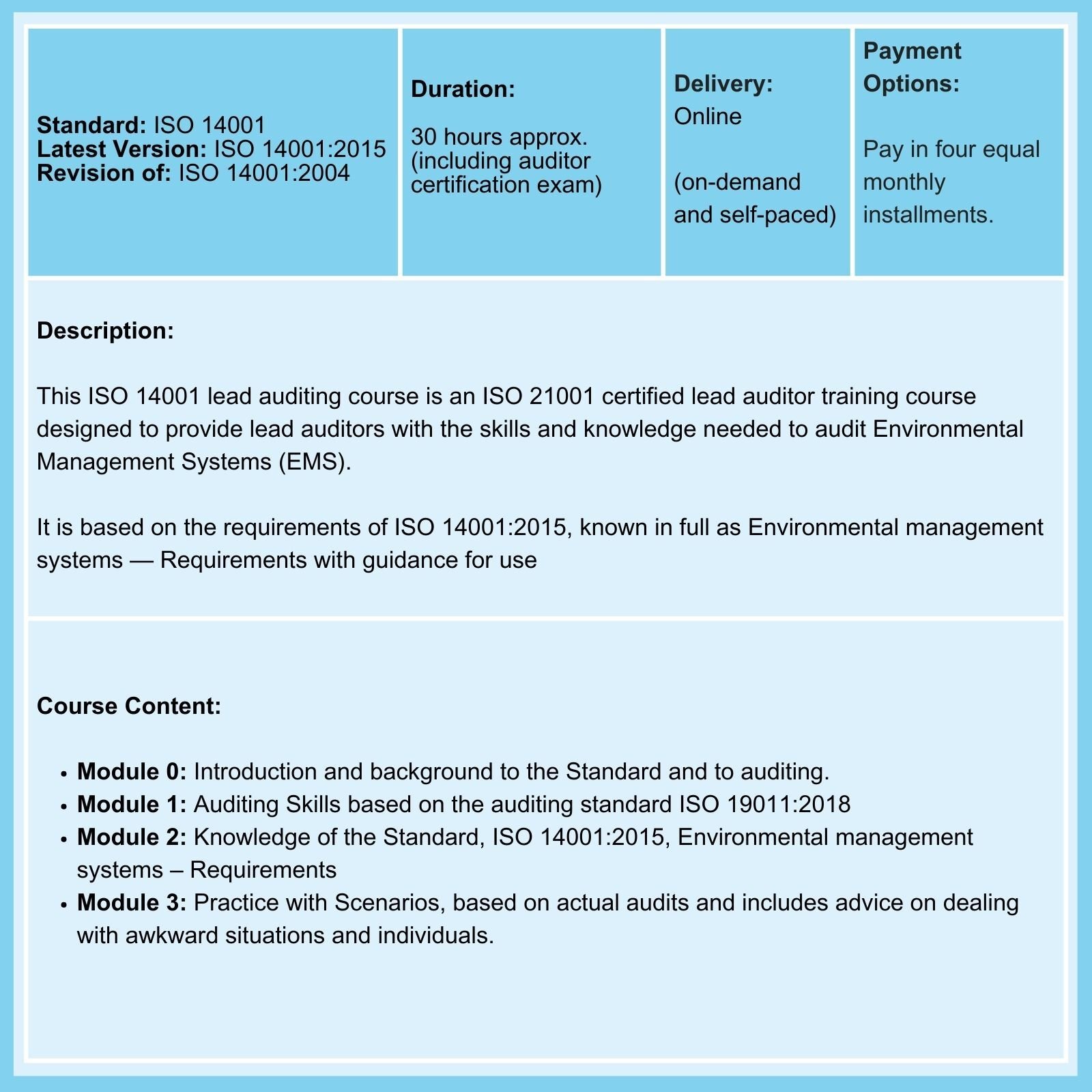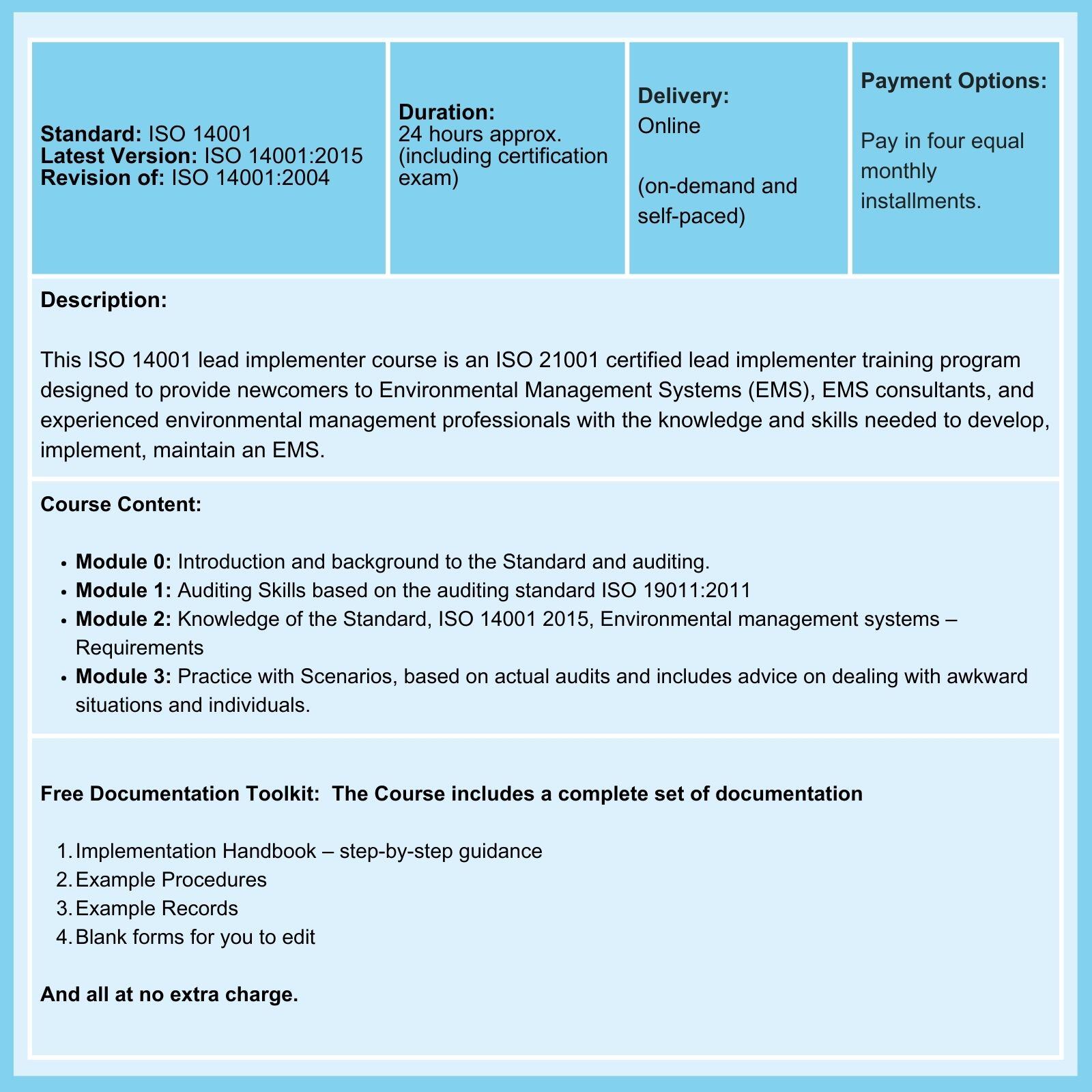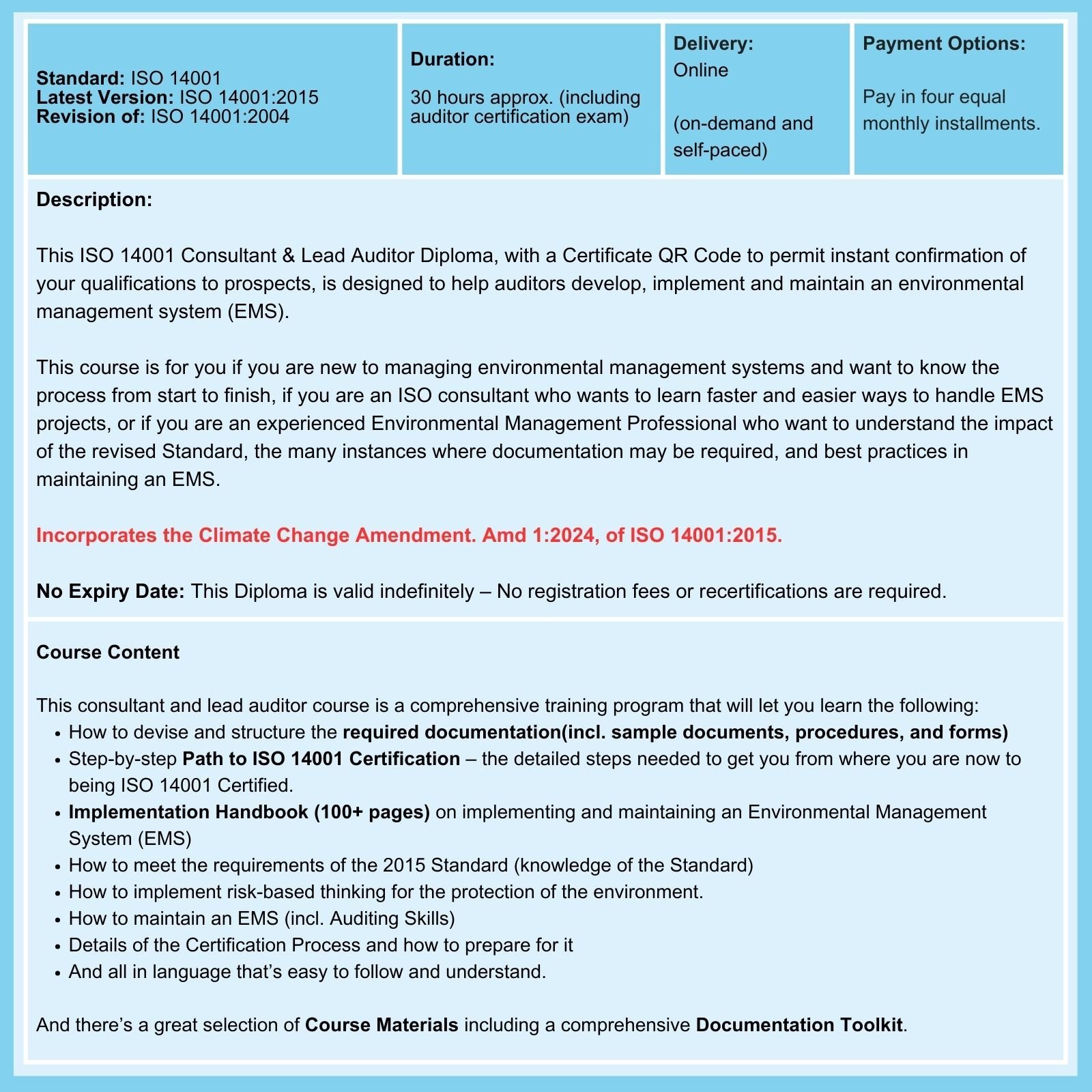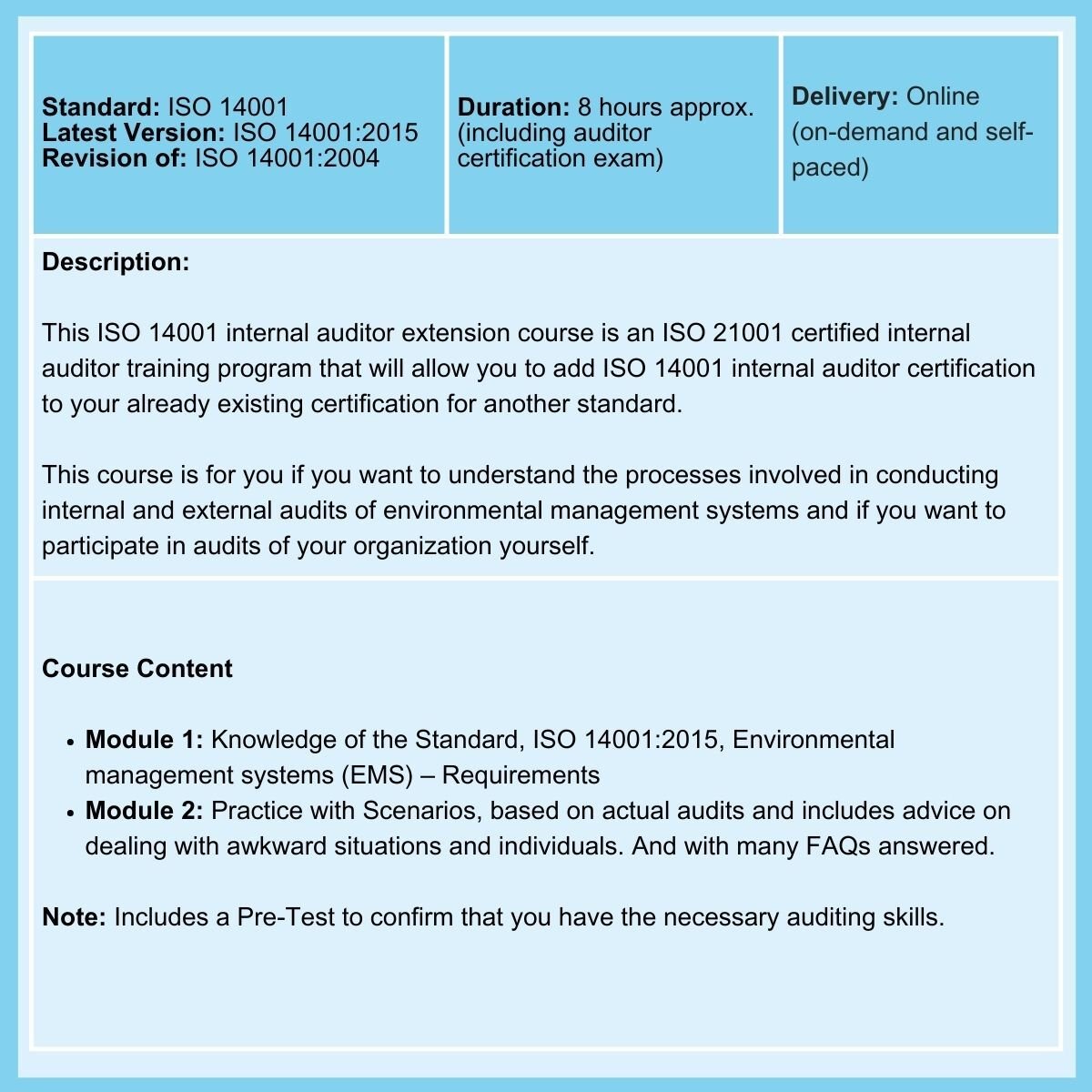ISO 14001 Audit Questions
|
What You Need to Check to Satisfy Requirements
|
| Does the company have an established Environmental Management System (EMS)? |
|
| Is there a defined environmental policy approved by top management? |
- Copy of the Environmental Policy signed by the Top Management
- Evidence of easy access to the Environmental Policy
|
| Are environmental roles, responsibilities, and authorities defined and communicated within the organization? |
- Documentation of job descriptions for relevant roles outlining specific responsibilities, including environmental duties and authorities for different functions or departments.
- Written procedures detailing environmental responsibilities and authorities for various functions or departments. These can be integrated into operational SOPs.
- Records of the environmental policy incorporating statements about roles, responsibilities, and authorities, demonstrating organizational commitment.
- Training records confirming that employees are adequately trained on their environmental responsibilities and authorities.
- Records indicating the communication of environmental responsibilities and authorities to all relevant personnel across different channels.
|
| Does top management review the EMS at planned intervals to ensure its continuing suitability, adequacy, and effectiveness? |
- Records of scheduled management review meetings.
- Evidence that top management actively participates in the review process.
- Records demonstrating that the review includes an assessment of the EMS's suitability, adequacy, and effectiveness.
- Evidence of decisions and actions taken as a result of the management review.
- Documentation showing that the review addresses any changes in the organization's context, including internal and external issues.
|
Planning
|
| Has the company identified the environmental aspects and impacts associated with its activities? |
- Documentation of environmental aspects and impacts identification process.
- Records of significant environmental aspects identified and the criteria used to identify them.
- Documentation of methodologies used for assessing environmental impacts.
- Evidence of involvement of relevant stakeholders in the identification process.
|
General Management and Leadership
|
| Does the company have measurable environmental objectives and targets? |
- Documentation of established environmental objectives and targets that are specific, measurable, achievable, relevant, and time-bound (SMART).
- Evidence of alignment between environmental objectives and the organization's overall environmental policy and goals.
- Records that indicate monitoring and tracking progress toward achieving environmental objectives and targets.
- Documentation of any revisions or updates made to environmental objectives and targets based on performance evaluations or changes in circumstances.
- Evidence of communication and dissemination of environmental objectives and targets to relevant stakeholders within the organization.
|
Support
|
| Are there adequate resources allocated for the implementation and maintenance of the EMS? |
- Documentation of budgetary allocations or resource plans specifically designated for EMS implementation and maintenance.
- Evidence of sufficient staffing levels and expertise dedicated to EMS-related activities.
- Records demonstrating the availability of necessary infrastructure, tools, and technology to support EMS requirements.
- Documentation of training programs or initiatives aimed at building employee capabilities related to EMS implementation and maintenance.
- Evidence of periodic reviews or assessments conducted to ensure resource adequacy and effectiveness in supporting EMS objectives and requirements.
|
| Is there an established process for employee competence, training, and awareness related to environmental management? |
- Documentation of a formalized training program or process that covers environmental management principles, procedures, and requirements.
- Records of training sessions conducted for employees at various levels within the organization, including documentation of attendance and training outcomes.
- Evidence of regular assessments or evaluations of employee competence in environmental management practices.
- Documentation of procedures for identifying and addressing specific training needs related to environmental management.
- Evidence of ongoing communication and awareness initiatives aimed at promoting environmental responsibility and compliance among employees.
|
| Are operational controls in place to manage significant environmental aspects? |
- Documentation of operational controls specifying measures to mitigate or minimize significant environmental impacts.
- Evidence of implementation of identified operational controls through procedures, work instructions, or other relevant documents.
- Records demonstrating regular monitoring and measurement of operational controls to ensure effectiveness in managing environmental aspects.
- Evidence of periodic reviews or assessments conducted to evaluate operational controls' performance and identify improvement opportunities.
- Documentation of corrective actions taken in response to deviations, non-conformities, or incidents related to operational controls.
|
| Is there a process for monitoring, measurement, analysis, and evaluation of environmental performance? |
- Documentation of monitoring and measurement processes used to assess environmental performance against established objectives and targets.
- Evidence of periodic evaluations of environmental performance, including data analysis and reporting.
- Records indicating the identification of trends and opportunities for improvement based on environmental performance data.
- Documentation of processes for determining the adequacy of monitoring methods and their alignment with established environmental requirements.
|
| Does the company have a process for evaluating compliance with legal and other requirements? |
- Records of compliance evaluations conducted, including documentation of applicable legal and regulatory requirements.
- Evidence of actions taken in response to identified non-compliance issues, including corrective actions and preventive measures.
- Documentation demonstrating ongoing monitoring and review processes to ensure continued compliance with environmental obligations.
- Records of communication with regulatory bodies and relevant stakeholders regarding compliance status.
|
| Are there processes for non-conformance and corrective actions? |
- Documentation of procedures for identifying and addressing non-conformities related to the EMS.
- Evidence of investigations conducted to determine the root causes of non-conformities.
- Records indicating the implementation of corrective actions and follow-up assessments to ensure effectiveness.
- Documentation of the process for reviewing and analyzing non-conformities to identify trends and improvement opportunities.
|
| Is there a process for continual improvement of the EMS? |
- Documentation of the organization's commitment to continual improvement through established processes and methodologies.
- Evidence of management involvement in promoting continual improvement initiatives.
- Records demonstrating the integration of continual improvement principles into EMS activities and decision-making processes.
- Documentation of stakeholder feedback mechanisms used to identify improvement opportunities.
|

